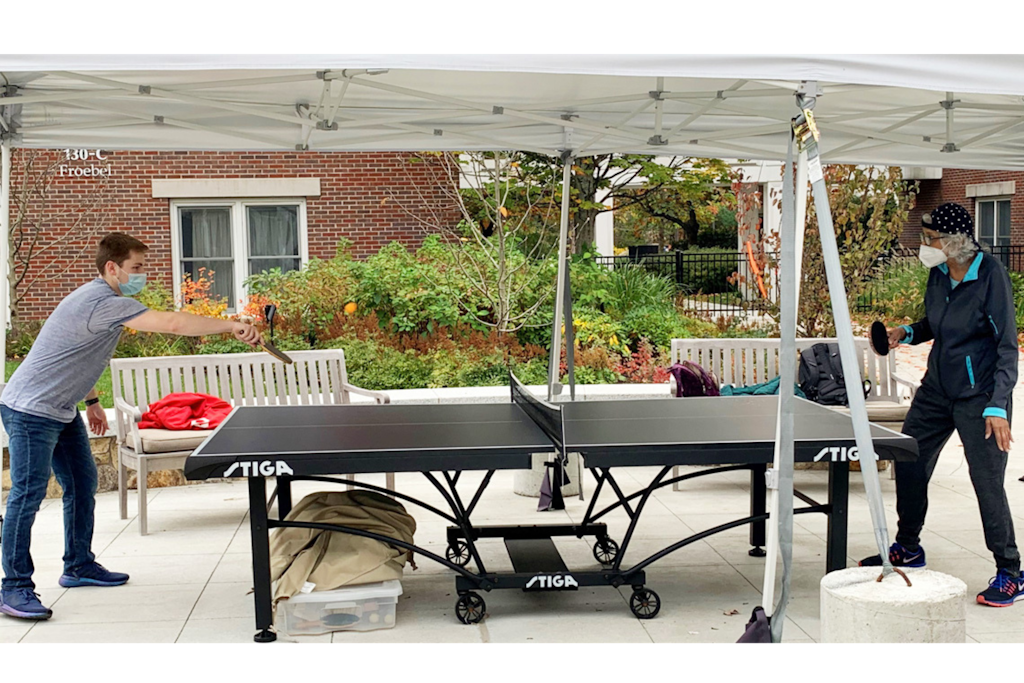Back to school: why retirement living on campus could be the future
Last updated on 25 June 2025

located at Lasell University in Massachusetts
Imagine living your retirement years just a short walk from lecture halls, cafes buzzing with students, libraries, theatres, and endless lifelong learning opportunities. That’s precisely what retirement village operator One Fell Swoop is proposing with a bold new plan to embed a retirement community within a university campus in Western Australia — a first for the state, and part of a growing global movement to rethink where and how older people age.
As Commercial Real Estate recently reported, the proposed village is being planned in partnership with an unnamed university. It aims to provide retirees with access not only to campus facilities but also the vibrancy of student life. For the university, it’s a way to build intergenerational exchange and long-term value on underutilised land. For retirees, it offers something increasingly rare in traditional retirement villages: stimulation, connection, and purpose.
A model gaining global traction
This isn’t just a quirky Australian experiment. Around the world, university-based retirement communities (UBRCs) are growing rapidly, particularly in the United States, where more than 100 colleges and universities now host retirement villages either on or adjacent to campus.
One of the most prominent examples is Lasell Village at Lasell University in Massachusetts. Residents are required to complete a minimum of 450 hours of learning per year, taking classes alongside undergraduates or through specially designed programs. The result is a truly integrated model that blends education, wellness, and community, not simply co-location.
Another success story is The Kendal at Oberlin, affiliated with Oberlin College in Ohio, where residents regularly attend lectures, concerts, and mentor students. These arrangements benefit both older adults and the academic community, increasing social cohesion, reducing ageism, and creating mutual value.
In the UK, the St Monica Trust partnered with the University of Bristol to create a similar model, embedding retirement housing in city-centre campuses where lifelong learning is celebrated as a right, not just a bonus.
Why it matters
As our population ages, so too does the expectation for what retirement should look like. Older Australians increasingly want to remain intellectually active, socially connected, and culturally engaged. The idea of “ageing in place” is being reimagined — not just in terms of physical home, but in proximity to ideas, conversation, and community.
There’s also a practical dimension: universities often sit on large plots of land and need new sources of long-term income. Retirement villages, particularly those operated by not-for-profit or university-owned models, can offer steady returns while serving the greater good.
Incorporating retirement living into campus life is more than a property play. It’s a values statement — one that says we see older adults as contributors, not just care recipients. It breaks down barriers between generations and shows what ageing well can truly look like.
Australia’s opportunity
With demand for diverse and high-quality retirement living on the rise, now is the time for Australian universities to reassess their role. Could our major institutions — like Monash, UQ, or UNSW — host vibrant intergenerational communities? Could this model help alleviate isolation, improve health outcomes, and foster more inclusive campuses?
One Fell Swoop’s plan may be the first of its kind in Western Australia, but it won’t be the last. The question is not if this model works — globally, it already does — but how we make it flourish here, in a uniquely Australian way.